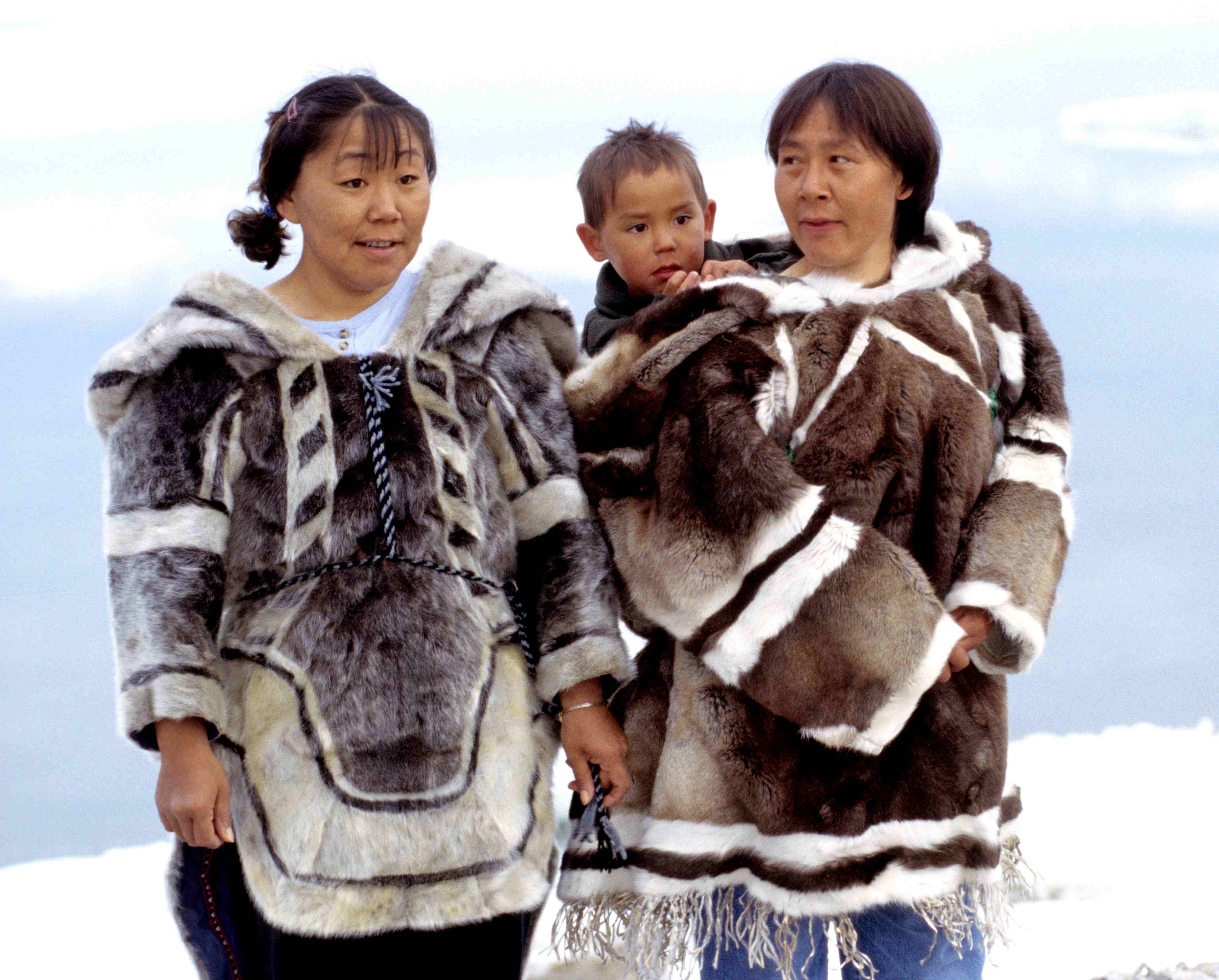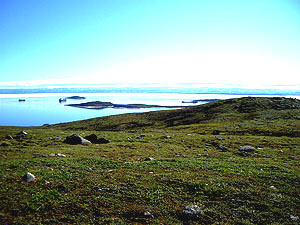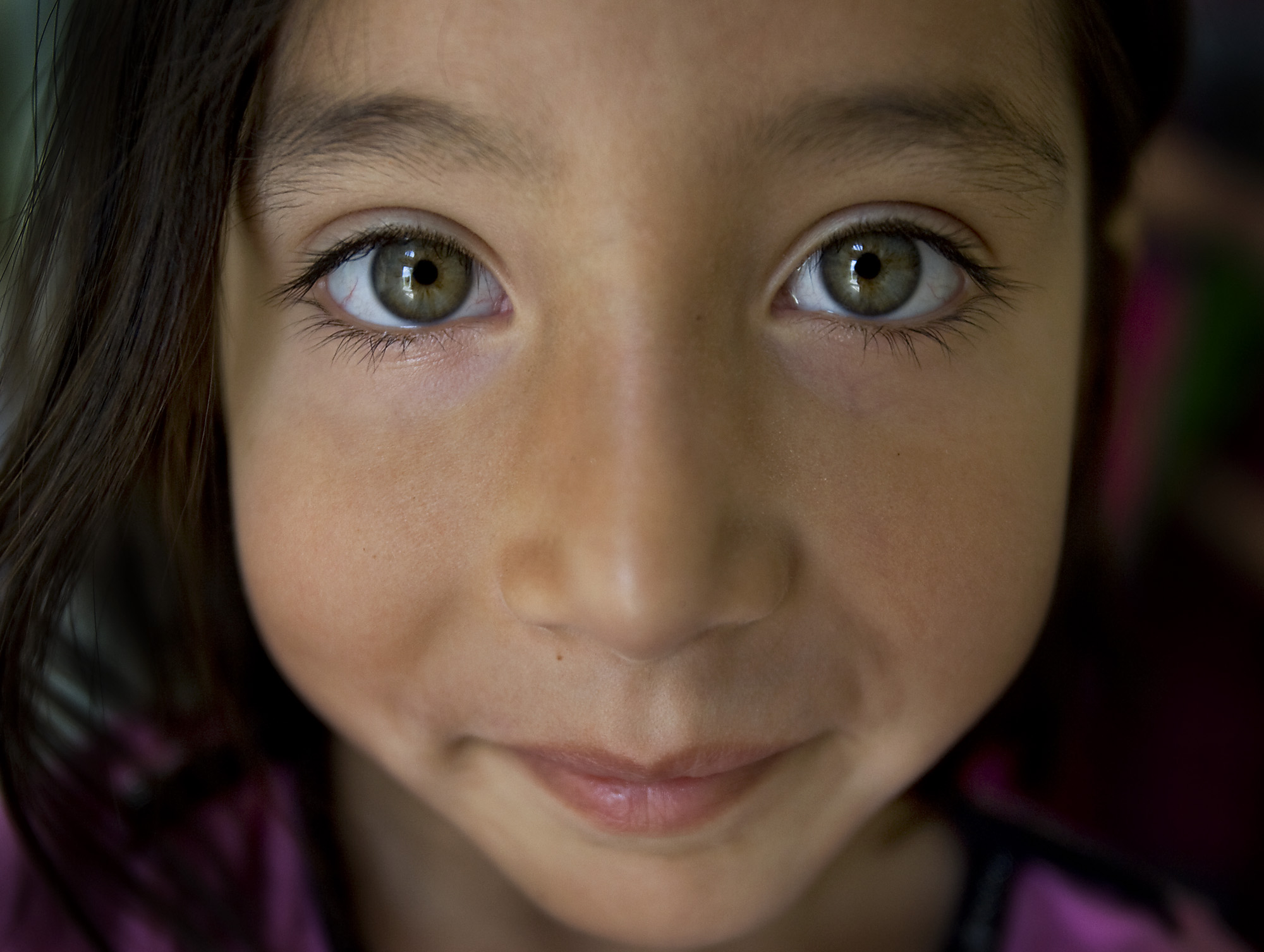For many centuries, outsiders
have called Inuit “Eskimos.” This term is no longer
considered acceptable. The Inuit prefer the name by
which they have always known themselves – Inuit,
which means “the people” in their native language of
Inuktitut.
 Inuit
inhabit vast areas of Nunavut, the Northwest
Territories, the coast of northern Labrador and
approximately 25 percent of northern Quebec.
Traditionally, they have lived above the tree line
in the area bordered by Alaska to the west, the
Labrador coast to the east, the southern tip of
Hudson Bay to the south and the High Arctic Islands
to the north. Inuit
inhabit vast areas of Nunavut, the Northwest
Territories, the coast of northern Labrador and
approximately 25 percent of northern Quebec.
Traditionally, they have lived above the tree line
in the area bordered by Alaska to the west, the
Labrador coast to the east, the southern tip of
Hudson Bay to the south and the High Arctic Islands
to the north.

About 55,700 Inuit live in 53 communities across
Northern Canada. The Inuit population has grown
rapidly over the past few decades.
Inuit origins in Canada date back at least 4,000
years. Their culture is deeply rooted in the vast
land they inhabit. For thousands of years, Inuit
closely observed the climate, landscapes, seascapes
and ecological systems of their immense homeland.
Through this intimate knowledge of the land and its
life forms, Inuit developed skills and technology
uniquely adapted to one of the harshest and most
demanding environments on earth.
Inuit treated human beings, the land, animals and
plants with equal respect. Today, they continue to
strive towards maintaining this harmonious
relationship. They try to use the resources of the
land and sea wisely in order to preserve them for
future generations. Strict hunting traditions and
rules help maintain this balance. Inuit in
Labrador, for example, forbid the killing of any
animal in its mating season.
Traditional knowledge of Inuit history, along
with knowledge of the land, plants and wildlife, has
been passed down through the generations. The
family is the center of Inuit culture and
co-operation and sharing are basic principles in
Inuit society. Inuit share the food they have
hunted and everyone does his or her part to help
those in need.
Inuit culture has been exposed to many outside
influences over the past century. Nevertheless,
Inuit have managed to preserve their values and
culture. Inuktitut is still spoken in all Inuit
communities. It is the principle language used in
radio and television productions originating in the
North and it is implemented in the school
curriculum.
Many Inuit communities continue to practice
traditional Inuit dance and song including the drum
dance and throat singing.

Oral history and storytelling are still very much
alive in Inuit culture, with tales passed down
through the centuries. These stories are often
about powerful spirits that inhabit the land and
sea. They have been a continuing source of
inspiration for Inuit artists whose prints and
sculptures are prized by collectors and art
galleries around the world.
Source: http://arcticinuksuk.com/index.php?option=com_content&view=article&id=4&Itemid=4
|


 IN OUR OWN VOICES
IN OUR OWN VOICES









 IN OUR OWN VOICES
IN OUR OWN VOICES






